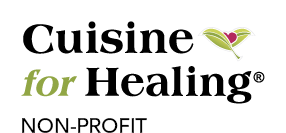Omega this omega that- what does it all mean?
Fatty acids are chemicals that are needed if the bodily systems and organs are to function properly. Although omega 3, 6 and 9 are commonly grouped together, there are noteworthy differences between them. They are all essential to the body to maintain certain functions and to aid in keeping you healthy. While both are fatty acids, each one has a different role in keeping your body performing at its absolute best.
Saturated fats that we get from the food of the animal origin (meat, milk, butter) increase the probability of diseases of the cardiovascular system, while unsaturated fats, on the contrary, are beneficial to the state of the vessels and reduce the probability of many serious diseases.
Omega-6
Most sources of omega-6 fatty acids can be found in the food you eat in your daily diets, while omega-3 fatty acids may be taken as a supplement. In fact, certain research says that too much omega-6 may lead to or increase the problems of certain medical conditions, along with depression. Your body does not make these fatty acids, which are essential for good health. You must obtain them elsewhere. Omega-6 fatty acid aids in reducing the symptoms of diabetic neuropathy, rheumatoid arthritis, allergies and high blood pressure. It eases the symptoms of menopause and it is also good for the sufferers of multiple sclerosis and ADHD. Add eczema, menstrual pain and breast cancer to the list of illnesses and diseases that omega-6 is helpful for preventing or treating. A good diet will provide all the omega-6 fatty acids that your body needs. Omega-3 fatty acids, on the other hand must usually be taken as some form of supplement. You see, omega-3 fatty acids are anti-inflammatory. Omega 6 fatty acids are pro-inflammatory — they promote inflammation. An estimated 175 million Americans (more than half of us) suffer from one form of chronic illness or another, and it’s probably because we consume so much of our fat in the form of omega 6 fatty acids. So, striving toward health is not about decreasing our fat intake, but rather increasing the healthy fat intake.
Omega-3
Omega 3 fatty acids are polyunsaturated fats with numerous health benefits, particularly regarding cardiovascular health.It is found in abundance in fish or fish oils. This essential fatty acid has been found to reduce the incidence of heart disease, as well as a number of other illnesses or conditions. Omega-3 fatty acid plays a crucial role in the function of the brain and in normal growth development. It also stimulates hair and skin growth. All Omega-3’s plays an important role in reducing different types of inflammation, while Omega-6 can often cause the inflammation to become even worse. Several other diseases are helped by the addition of an Omega-3 supplement. Arthritis, lupus, osteoporosis, asthma, diabetes, irritable bowel disease, breast cancer and colon cancer are just some in a long list of ailments that can benefit from omega-3 fatty acid. Infants who do not get enough omega-3 fatty acid during the mother’s pregnancy can suffer from nerve or vision problems. Adult deficiencies may include fatigue, poor circulation, depression or mood swings, dry skin and poor memory.
Good sources are: Fish, especially salmon, flax seeds, nuts, beans, spinach, broccoli and cauliflower.
Omega- 9
Omega-9 monounsaturated fatty acid exists both in vegetable and the animal kingdom. It is of the industrial importance and also a part of the most oils. Omega-9 is often called olein acid. They are produced in the human body from Omega-3 and Omega-6 acids. Omega-9 is the most useful monounsaturated fatty acid, which helps to lower cholesterol, protects the vascular walls and is essential for people with excess weight.These acids reduce cholesterol, reduce the risk of heart attacks, reduces inflammation, improves immunity, improves skin condition, reduces the risk of many types of cancer. Bottom line, we need more omega-3s and omega-9s in our diets and almost no additional omega-6 fatty acids
Good sources are: Olive oil (up to 80% of the volume), walnuts, peanuts, sunflower seeds, avocado and hazelnut contain the acid.
Come try our Box Lunch with Salmon or any number of our meals made with olive oil. They are full of good omega’s!
Happy Healthy Eating
Dana
http://www.fitday.com/fitness-articles/nutrition/fats/omega-6-vs-omega-3-fatty-acid-whats-the-difference.html
http://health.usnews.com/health-news/diet-fitness/diet/articles/2011/04/14/8-easy-ways-to-load-up-on-healthy-omega-3-fats









